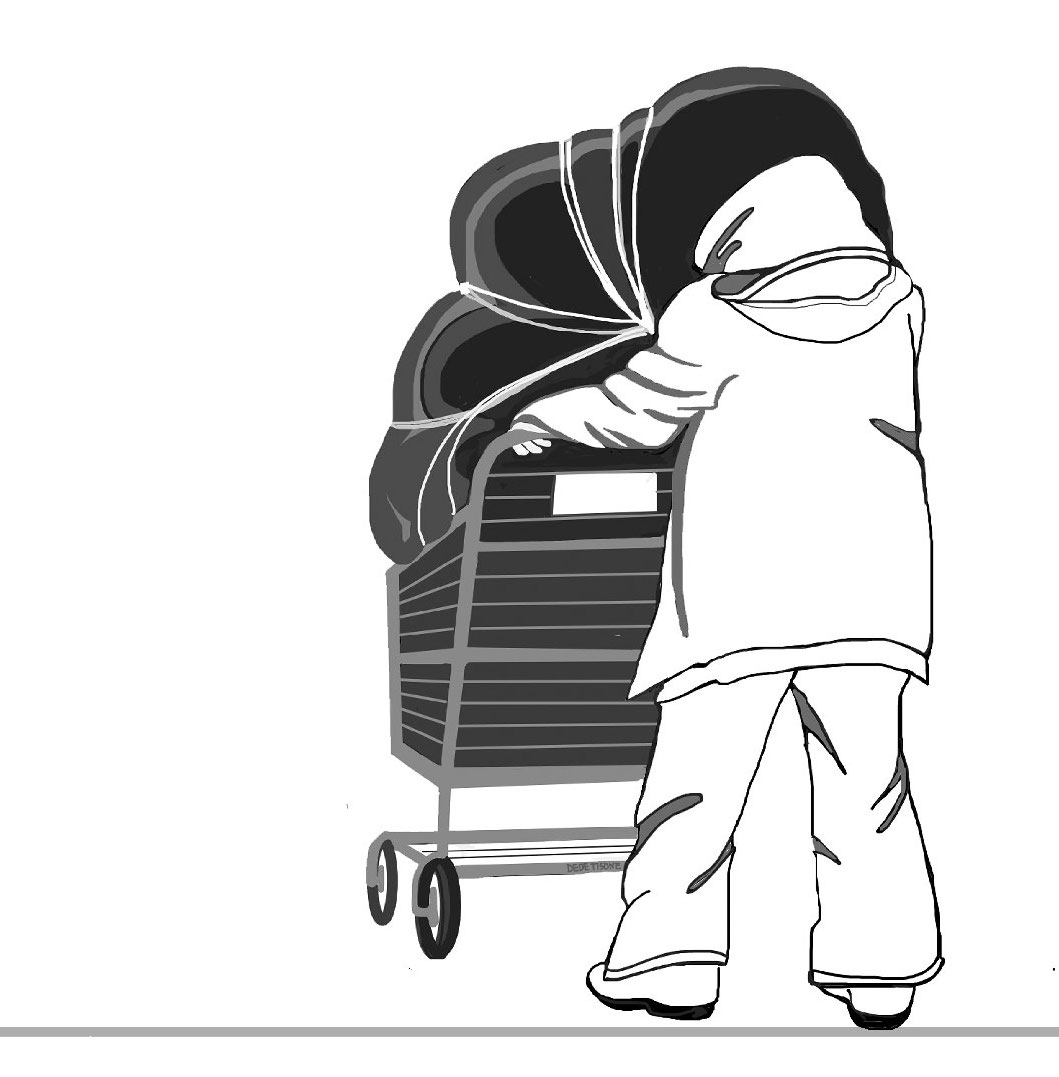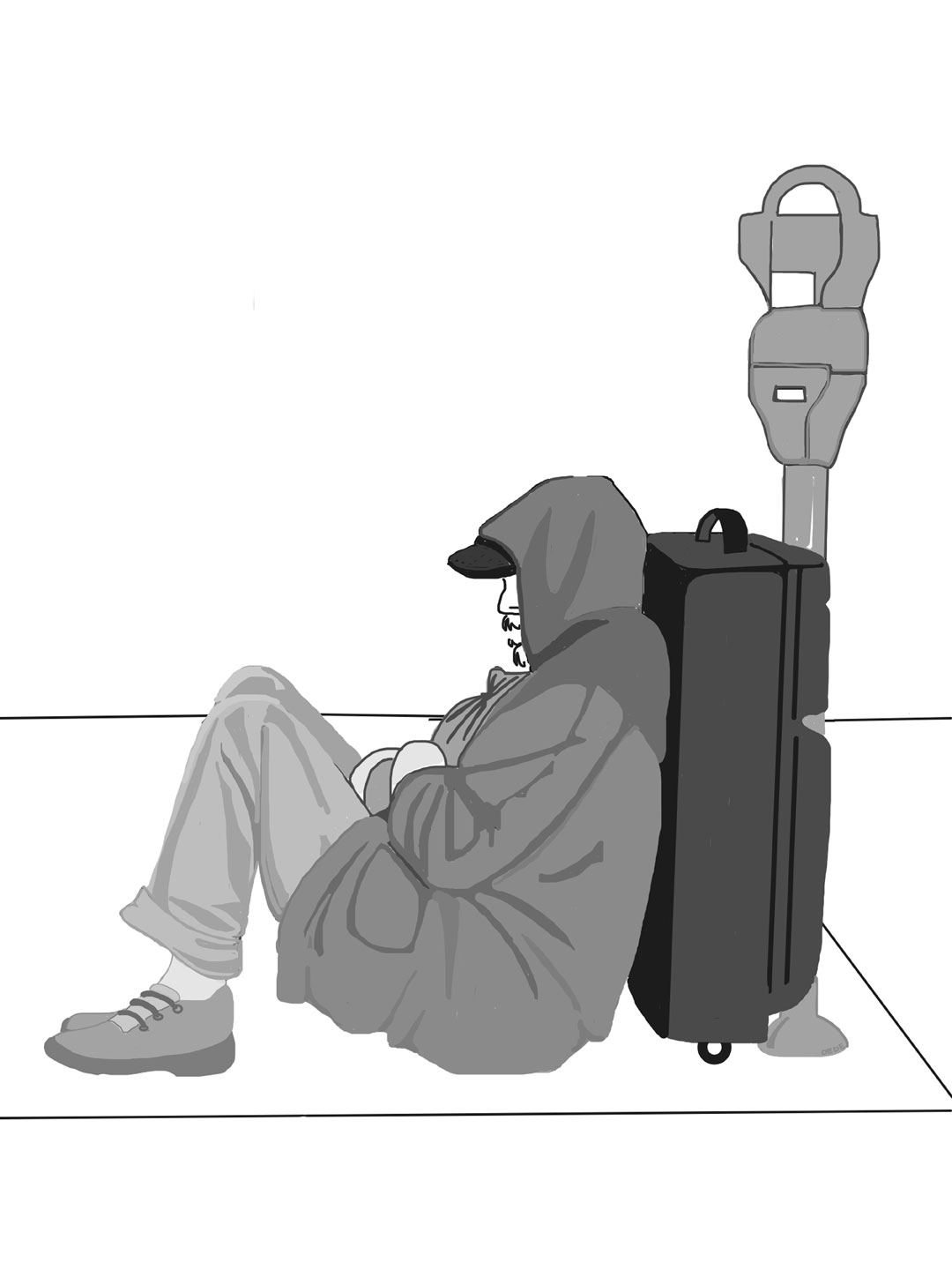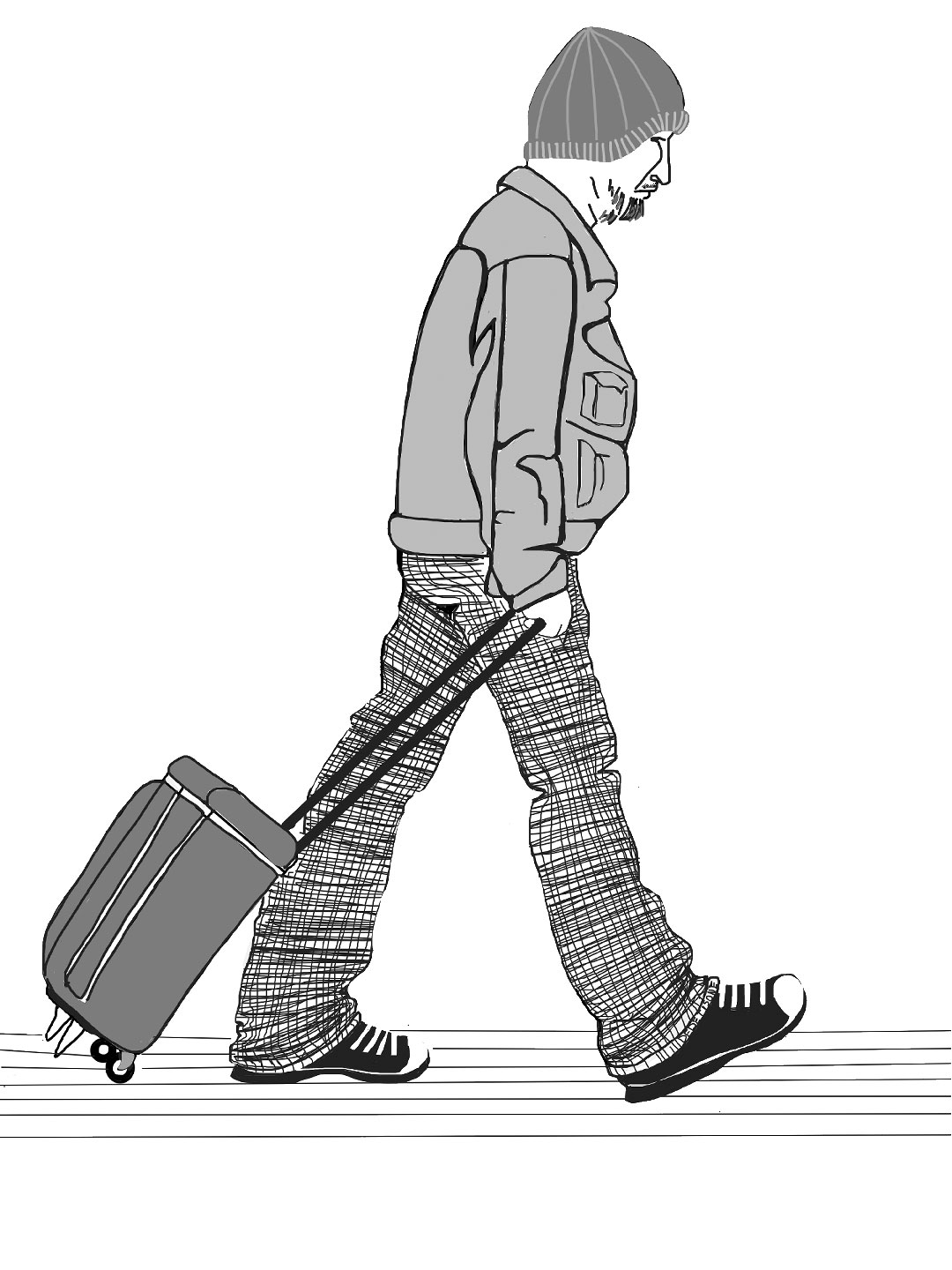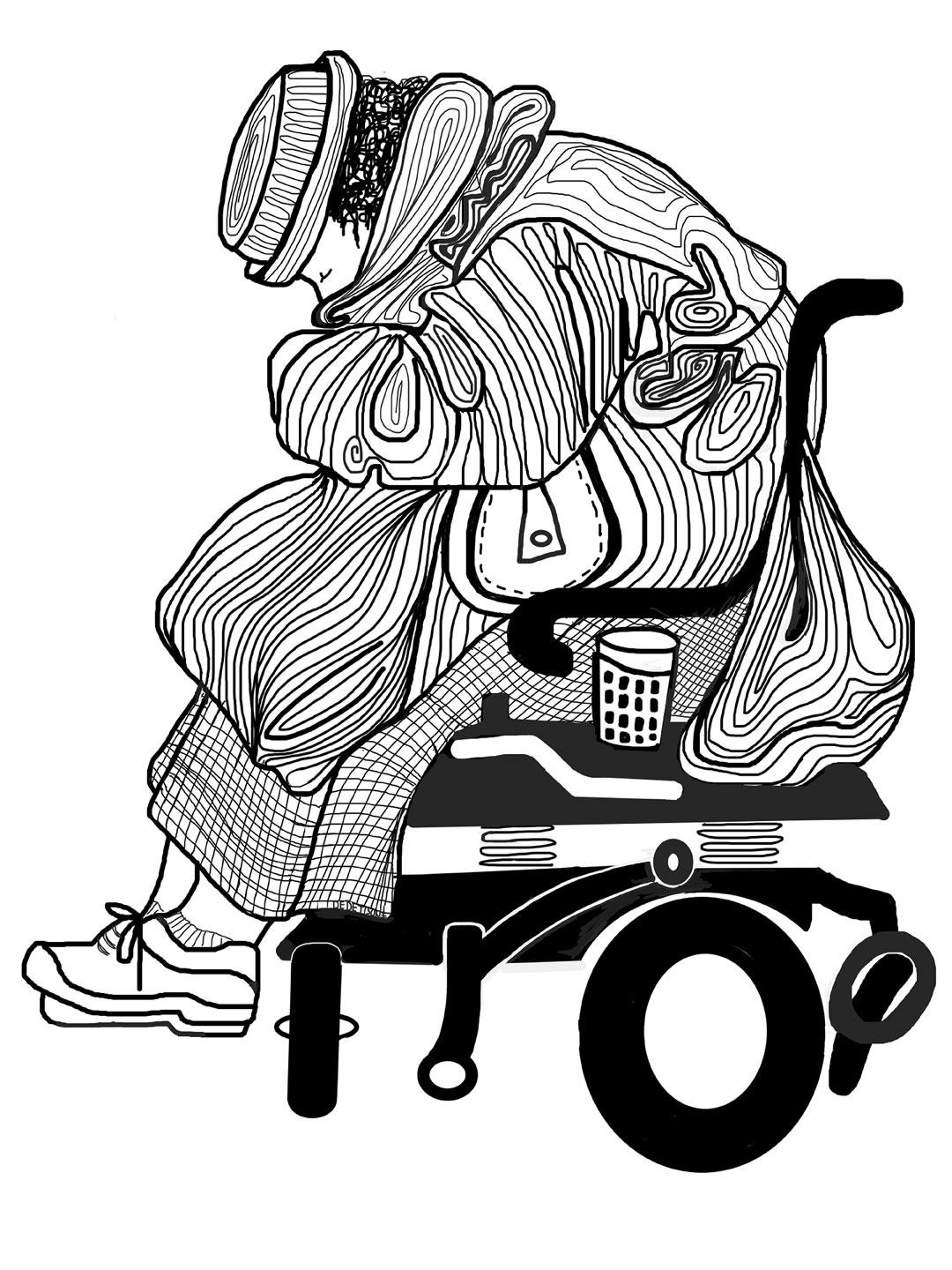A report by the nine organizations of the Western Regional Advocacy Project: Denver Homeless Out Loud, Los Angeles Community Action Network, St. Mary’s Center, Street Spirit, San Francisco Coalition on Homelessness, Sacramento Homeless Organizing Committee, Street Roots, Sisters of the Road and Right2Survive.
It is easy to forget that homelessness was supposed to be temporary. As homeless states of emergency continue to pop up all over the U.S., as ten-year plans to end homelessness continue to expire and get renamed, and as evictions, displacements, and the numbers of community members living on the streets continue to increase, homelessness becomes more and more entrenched as a permanent phenomenon.
Neoliberalism, which started in the 1980s in the U.S., is the current phase of capitalism. Neoliberal policies decimated federal public housing funding and created the contemporary homeless problem. It also has shifted our entire material reality by privatizing formerly public goods including public space, housing, and healthcare, expanding the prison system and criminalizing social behaviors, destroying the welfare state, and centralizing wealth for a small few while increasing poverty for most, amongst other hugely influential shifts.
Instead of addressing the structural reasons that are rooted in neoliberalism and have been forcing people out onto the streets for the past 30 years, the political discourse has continued to focus on how to manage the increasing population. These management tools include using police to criminalize people for existing in public, creating a multi-billion dollar industry to “help” homeless people, and continually cooking up new non-solution solutions to end homelessness.
In the rush to appear to be doing something about the “homeless problem,” politicians often funnel large amounts of money into projects that do little or nothing to change the material conditions of the lives of homeless people, or are simply harmful. While the intention to be helpful is great, the end result of being deceitful to the broader public and wasting millions and millions of dollars on these solutions is not. Many of the non-solution solutions listed in this article have positive sides that make some people’s lives easier. Although this is great, it does not make it an actual solution towards ending homelessness. The solutions that are most helpful to homeless people actually come from homeless people themselves, foster self-determination for everyone, stress the need for housing, and do not involve the police at any step of the project.
Because Western Regional Advocacy Project (WRAP) is a coalition of nine organizations working for poor and homeless people’s rights across cities in three different states, we often come in contact with these non-solution solutions. At times, we engage with the non-solution solutions that are shortsighted but helpful to a small number of people, but we never engage with the solutions that are directly harmful to people living on the streets. In general, we tend to be critical of all these non-solution solutions because we strive for alternatives that actually address the needs of homeless people and move towards systematically eliminating the possibility that anyone would be forced to become homeless.
The following is an abridged list of WRAP’s “favorite” non-solution solutions to ensure that the status quo of homelessness remains:
1) Criminalizing Existence: County Jails and State Prisons Instead of Housing
The favorite go-to response from cities across the country is to force homeless people out of public space by criminalizing basic life-sustaining activities in public space (sitting, lying, sleeping, resting, eating, etc.). Homeless people are told to move along, ticketed and/or arrested with the goal of removing them from public space.
Under the guise of working for the public good, city politicians are quick to jump on criminalizing everything they possible can. This means criminalizing people for camping when they have nowhere else to protect themselves from the elements. It also means criminalizing people simply for possessing “camping paraphernalia” with the intent to use.
Under the guise of public health, cities and police departments are sweeping encampments and displacing people from the place where they live, and the community they live with. Often, these sweeps involve confiscation of people’s property by claiming that it is “garbage.” Other strategies include closing public restrooms, turning off public water sources, and denying people the right to wash themselves or their things. More restrictions on how many belongings homeless people can have include limiting belongings to two square feet or making it illegal to store property in public space.
Under the guise of public safety, poor and homeless people are funneled into local county jails and state prisons. Most often this happens because people are given bench warrants, or warrants issued by a judge, for accruing many fines for existing while poor in public. For example, these fines can be accrued by being unable to pay for public transportation and by receiving quality of life citations (which, as previously stated, can include sleeping, eating, or sitting in public spaces). Others are locked up in county jails for simply not having the money to pay bail. This creates a sense of safety for wealthy people, but is a direct threat to poor people’s safety, as jails and prisons are deeply unsafe for everyone inside.
All of these strategies for criminalizing homeless people’s existence are meant to make it harder for people with wealth to see homelessness. They do nothing to give people access to housing, to services that people want, or to self-determination. In fact, criminalizing existence entrenches people in poverty and creates more and more obstacles for people trying to get off the streets.
2) Collaborating with Business Improvement Districts: Gentrifying Cities One Neighborhood at a Time
Another solution that excites the minds of business and property owners is to collaborate with the police through Business Improvement Districts (BIDs) to “address homelessness” and gentrify neighborhoods. While it seems obvious that business owners, property owners, police, and BIDs are not in an appropriate position to say what homeless people need, this does not stop them from doing so and doing so very loudly.
Business Improvement Districts are the gentrification station. They are deeply non-democratic public-private entities. BIDs were created to give an opportunity for business owners to charge additional fees to property owners in a specific area to supplement parking infrastructure and lighting maintenance. Nowadays, BIDs charge additional fees to a specific area to fund sanitation services, private security, more police, and many anti-homeless initiatives. All of these BID services are meant to make business districts more appealing to wealthy gentrifiers at the expense of the lives of long-term, low-income residents and homeless neighbors.
BIDs are known to help solve the homeless problem by hiring poor and homeless people as security guards to police other poor and homeless people. They engage in lobbying and public policy in favor of new criminalization efforts and lobby against homeless people fighting criminalization. Sometimes they fund homeless services, but this is largely to maintain some amount of control over what those services can do. They also participate in, collaborate with, and often initiate sweeps of homeless encampments in addition to supporting the enforcement of anti-homeless ordinances including panhandling, vagrancy, and anti-transient ordinances.
3) City-Sanctioned Encampments That Deny Self-Determination – An Innovative Idea in Surveillance and Policing
Of course, one of the most obvious non-solution solutions is the shelter system. Shelters were created and were effective as an emergency option for people on the streets. They were never intended to be used as a long-term solution to give people shelter. Shelters were also absolutely never meant to become a permanent tier of housing because are not actual housing. The shelter system is not a viable or safe solution for many homeless people, but that does not stop politicians from promoting them as if they are a real solution.
An innovative idea that has been circulating for years but has recently seen a reinvestment is the idea of creating city-sanctioned encampment shelters. These initiatives create legal encampments in large abandoned areas—usually far away from city centers—that are run by the city or a non-profit, and function like outdoor shelters. This is different from encampments that have gained legal exemption from cities, but are run by and for their residents, and don’t involve criminalizing, surveying, or policing people.
The formation of encampments does not represent an end to homelessness. Rather, they are an indication of a critical need to create more effective, local systems for responding to homelessness. Official strategies should focus on connecting people to permanent long-term housing solutions and not creating and operating city-run encampments. At the very least, official strategies should honor the creative ways that homeless people are housing themselves and their communities, such as building tiny homes and other structures, in response to the lack of housing.
People sleeping in encampments are diverse, and interventions must address a range of needs, challenges, and goals. The forced dispersal of encampments is not an appropriate solution, though city-sanctioned encampments have been used as a justification for increased police presence and sweeps of homeless camps by entrenching the idea of non-city sanctioned encampments as an illegal public safety and health concern. This forces the constant packing up and moving of elders, disabled people, and physically injured individuals sleeping in encampments, while ignoring reasons why people would choose a non-city sanctioned encampment over a city-sanctioned one. A person’s refusal to enter a city-sanctioned encampment can also be used to justify the criminalization and/or arrest of that person.
Homeless people who live in encampments use many strategies to keep themselves and their communities safe. One of these strategies involves petitioning the City for code waivers, exemptions, or pushing for them to simply ignore that the encampments exist. These solutions are useful so long as they are not used by cities to pit homeless people against each other by naming some people’s encampments legal while others as illegal. They are also helpful as long as they do not increase the criminalization of these communities. Cities should not be congratulated for doing the most basic work of allowing people to sleep and rest without being criminalized, but should be celebrated when they invest in long-term housing that meets the needs of homeless people in their neighborhoods.
4) Homeless Courts: Using the Criminal Legal System to Fight Problems Created by the Criminal Legal System
As was mentioned earlier, criminalization is not a solution to homelessness. In response to this, commonly, there is a push for other criminal legal approaches to address homelessness, like homeless courts. The criminal legal system exacerbates problems for homeless people in all of its iterations and should not be used as a solution.
Homeless courts were created as a way to address homeless issues outside of the regular court system. Similar to mental health courts, these courts were created because the “regular” court systems has become overwhelmed with Status Crime Offenses.
Homeless courts do not lessen or change the quality of life charges that homeless people are facing. Instead, they create a special court to address the so-called crimes of engaging in basic life-sustaining activities while homeless. Homeless courts further institutionalize homelessness and entrench homelessness in the criminal legal system. These courts do help people access housing services—but only if they have pleaded guilty. Pleading guilty also often forces people into services that they may not want or need, including drug treatment and case management.
People should not need to be arrested to access services. People should not be arrested for quality of life charges. Quality of life charges are violent, racist, classist, and should not exist. The criminal legal system is a violent system based on racism, classism, and other oppression, and cannot properly address homelessness.
5) Outreach: A Great Way To Beef Up Your Grant Proposal
Perhaps the most overused non-solution solution to homelessness is outreach. Outreach can actually be a useful tool in gathering information and creating a connection between people. There are plenty of ways that people are doing outreach that supports real solutions towards ending homelessness. At its best, outreach provides food, blankets, medical supplies, harm reduction materials, access to showers, and cop watching to people living on the streets. Unfortunately, much of this type of outreach has been criminalized and de-funded.
Outreach can also be used to perpetuate the myth that people are on the streets and other public spaces because they don’t know where to go for help or are just too dysfunctional to get there. Local, state and federal governments, BIDs, health departments, police, and community organizations all conduct street outreach. At its worst, this outreach is done to “look good” as a media stunt, to aid the displacement of people from encampments with threats of police sweeps, or simply to justify increases to funding for organizations coordinating the outreach.
Often, outreach is a practice of futility. When all the service providers, treatment centers, and housing have massive waitlists, doing outreach to tell people that there is nothing available for them besides a waitlist is not particularly helpful. While new innovative outreach programs pop up periodically in cities and towns all over the U.S. with different uniforms, different people, and different names—the end result of nothing changing for homeless people remains the same.
6) Case Management, Life-Skills Training, and the Homeless Industrial Complex
An entire industry has been created to “help” homeless people over the past 30 years. This special arm of the non-profit industrial complex is created to come up with new best practices, new experts, and new projects to funnel money into. Nowadays, most homeless service providers are required to include case management and life-skills training. While these services are helpful for some, for most they do nothing at all or are directly harmful.
Case managers are assigned to homeless people to provide emotional support and help link people with services that they need. As mentioned earlier, the most helpful services like long-term permanent housing are consistently unavailable. While politicians claim that homeless people are service resistant, the reality is that most services are resisted because they offer nothing particularly helpful.
Life-skills trainings are given at many of these service provision non-profits. These trainings are often mandatory and include literacy, numeracy, budgeting, keeping appointments, contacting services, dealing with bills, interpersonal communication, dealing with disputes, self-confidence, building social network skills, etc. While these trainings on how to better participate in capitalism are helpful to some, many find this to be a deeply condescending and harmful practice.
The thing that homeless people need most is a home. Homeless people often have very little in common with each other besides not having a permanent house to live in. Unless the life-skills trainings are about building housing and non-profits are purchasing land for people to put these houses—they are going to continue to be mostly irrelevant.
7) Navigation Centers, Coordinated Entry Systems, Vulnerability Indexes: The Many Ways to Link Homeless People Up with Housing That Doesn’t Exist
Under neoliberalism, there are many names for the same thing to make it appear as though the idea is a new or useful one. These solutions are the least harmful of all solutions on this list. However, they are included because of how much money they waste on being marginally helpful and mostly useless.
There is a push for new Navigation Centers across the Bay Area in California. Navigation Centers are large centers where homeless people can come to be “navigated” to services in the city. This $3 million solution is meant to create a one-stop shop where people can access all of the services in the city at one place without having to figure out where all of the services are and what they do on their own. This is not a bad idea. Services in large urban cities can be overwhelming and complicated to navigate.
The problem with the Navigation Center model is that it is not particularly successful in linking homeless people with long-term permanent housing because there is no housing to be linked up with. In San Francisco, there is a small number of temporary shelter beds for people in the Navigation Center. The majority of people who access the Navigation Center receive temporary housing, a bus ticket out of town or they are pushed back onto the streets.
A similar project in Los Angeles, the Coordinated Entry System (CES), attempts to bring services together in one place for homeless people to access. The CES involves extensive outreach and recruitment of homeless people. Unfortunately, similar to San Francisco, these methods are not particularly helpful because there is no housing to coordinate or to be made accessible to people living on the streets. The CES measures their success by how many thousands of people are on waitlists for housing, but it can take years for people to have any movement on those wait lists.
In Sacramento, the Common Cents program is another project to coordinate services. Common Cents is specifically interested in addressing the needs of homeless people at the highest risk of premature death. They use a vulnerability index to assess severity of need for housing.
While prioritizing people in the most dire need is a great approach, the reality is that there is not enough housing for even those people. There are over 1,000 people on the waiting list because there is no housing available. This approach also does not address the fact that living on the streets creates a high risk for premature death for all people. People need adequate housing in order to survive. Housing is a human right and everyone in this country, one of the wealthiest countries in the world, should have access to housing that they can afford.
All of these solutions, almost identical to each other in different cities in the West Coast, merely bring together the services that exist. The problem is that there is not enough housing. These solutions will continue to not address the needs of people living on the streets until there is actually enough housing built in these cities.
Homelessness will end when everyone has a house to live in and can access their basic needs like eating, sleeping, resting, using the bathroom, and having contact with other humans. This is not an idealistic or unattainable goal. There is enough money in this country to ensure that everyone has a house. After all, we have no problem funding home ownership for wealthier people, and we have no problem building luxury condos in urban cities across the U.S. that are only accessible to the most wealthy. Ending homelessness is a problem of political will and not economics.
We cannot continue to allow these non-solution solutions to pop up in cities across the U.S. We need housing and we need it now. Homelessness has been a crisis for 30 years. People living on the streets all over the U.S. are experiencing premature death at disturbingly high rates for lacking access to the most basic human things. Poor communities are under attack. The time to be bold and invest in a world where we can all thrive is now.
The first step is incredibly simple: Build housing for every person to live in and abandon the non-solution solutions immediately.
For more information about the Western Regional Advocacy Project, visit wraphome.org
Artwork by Dede Tisone.





